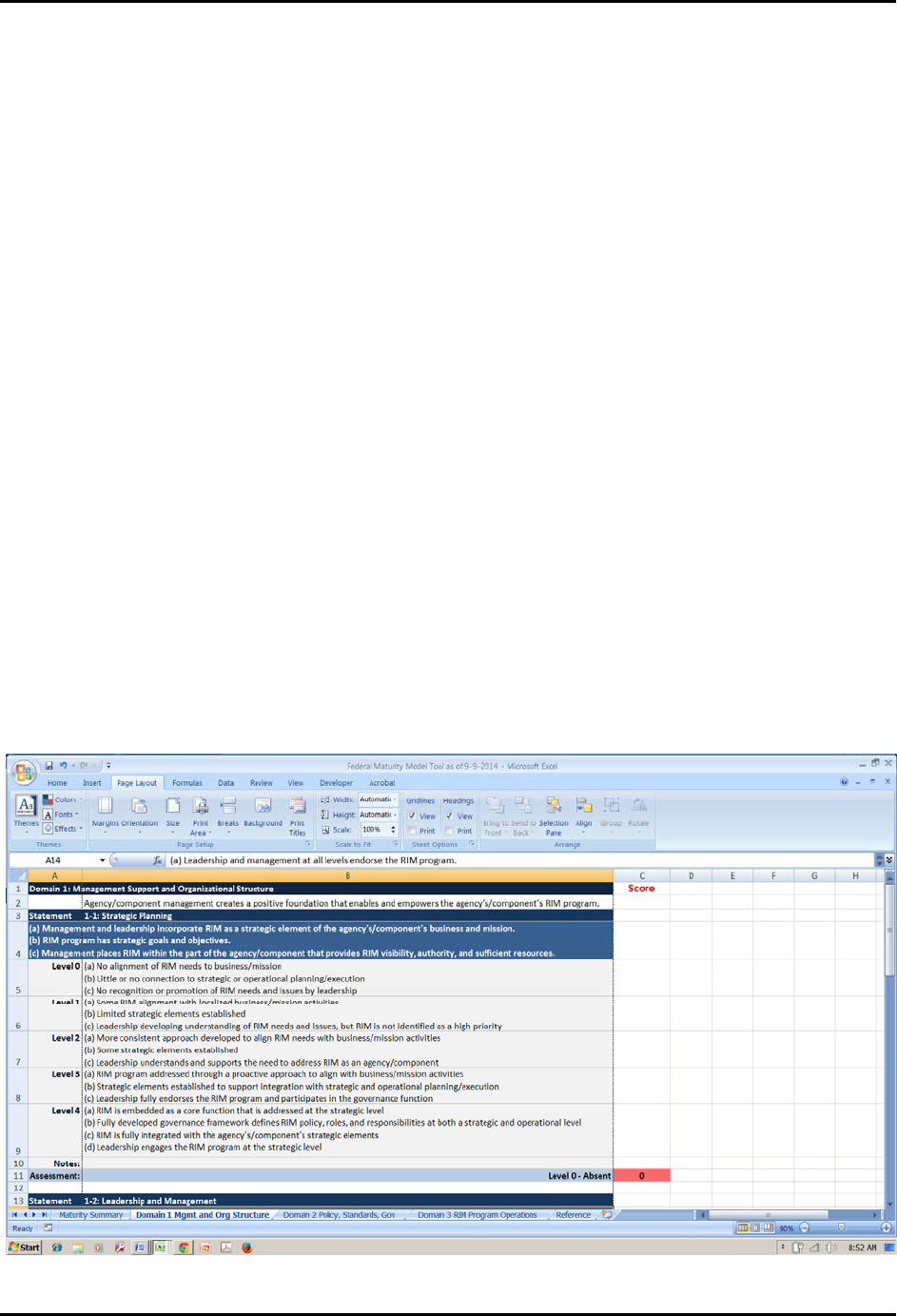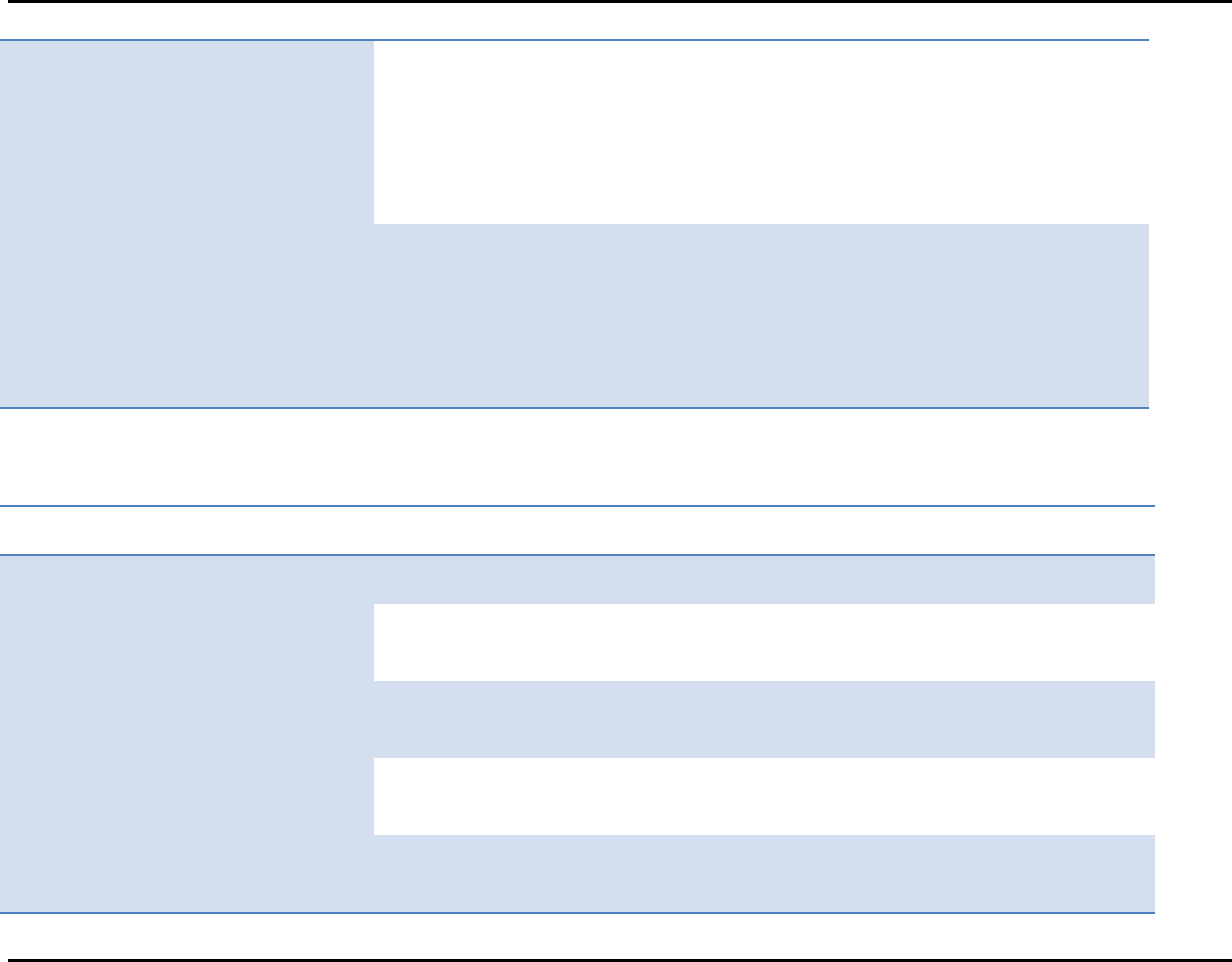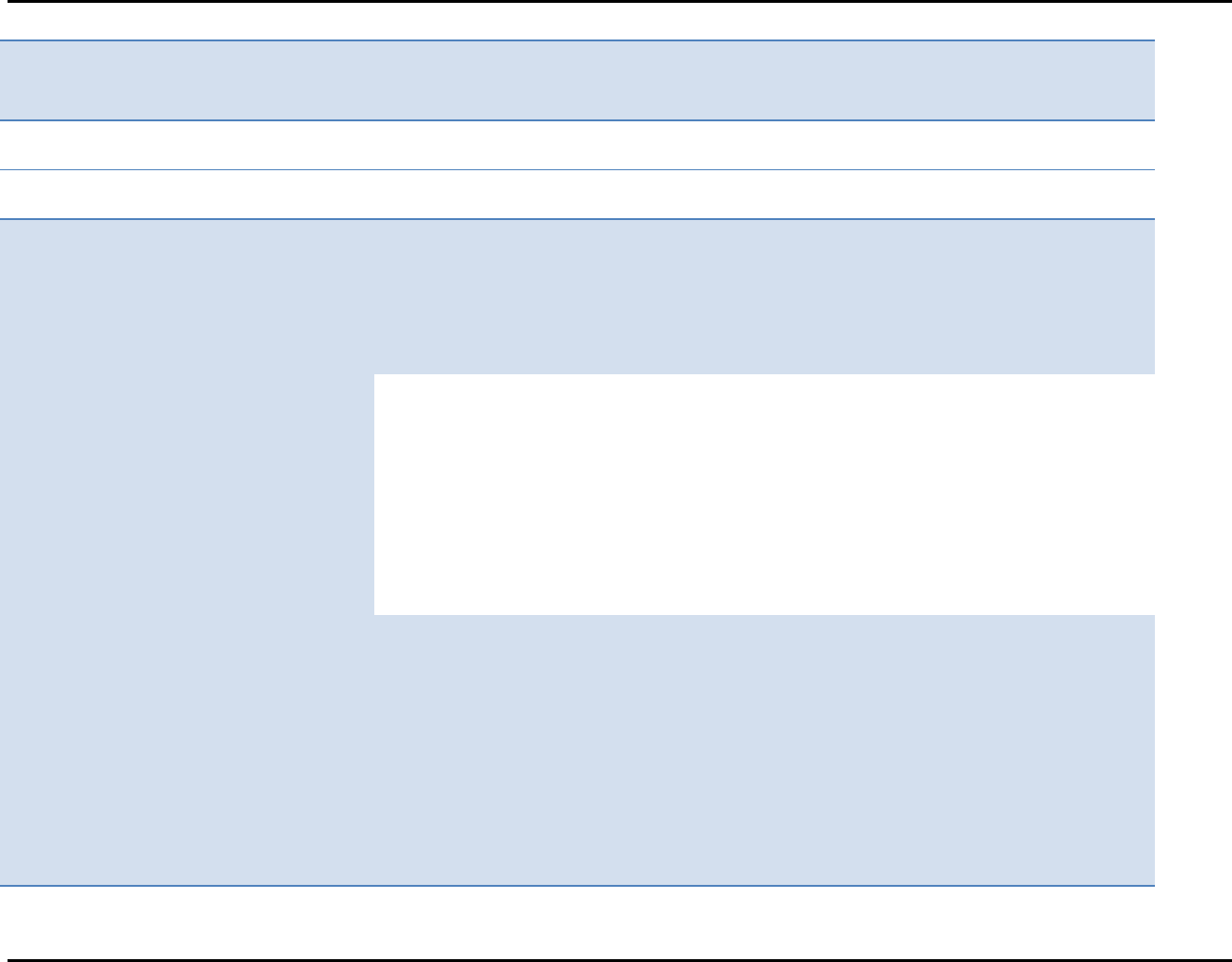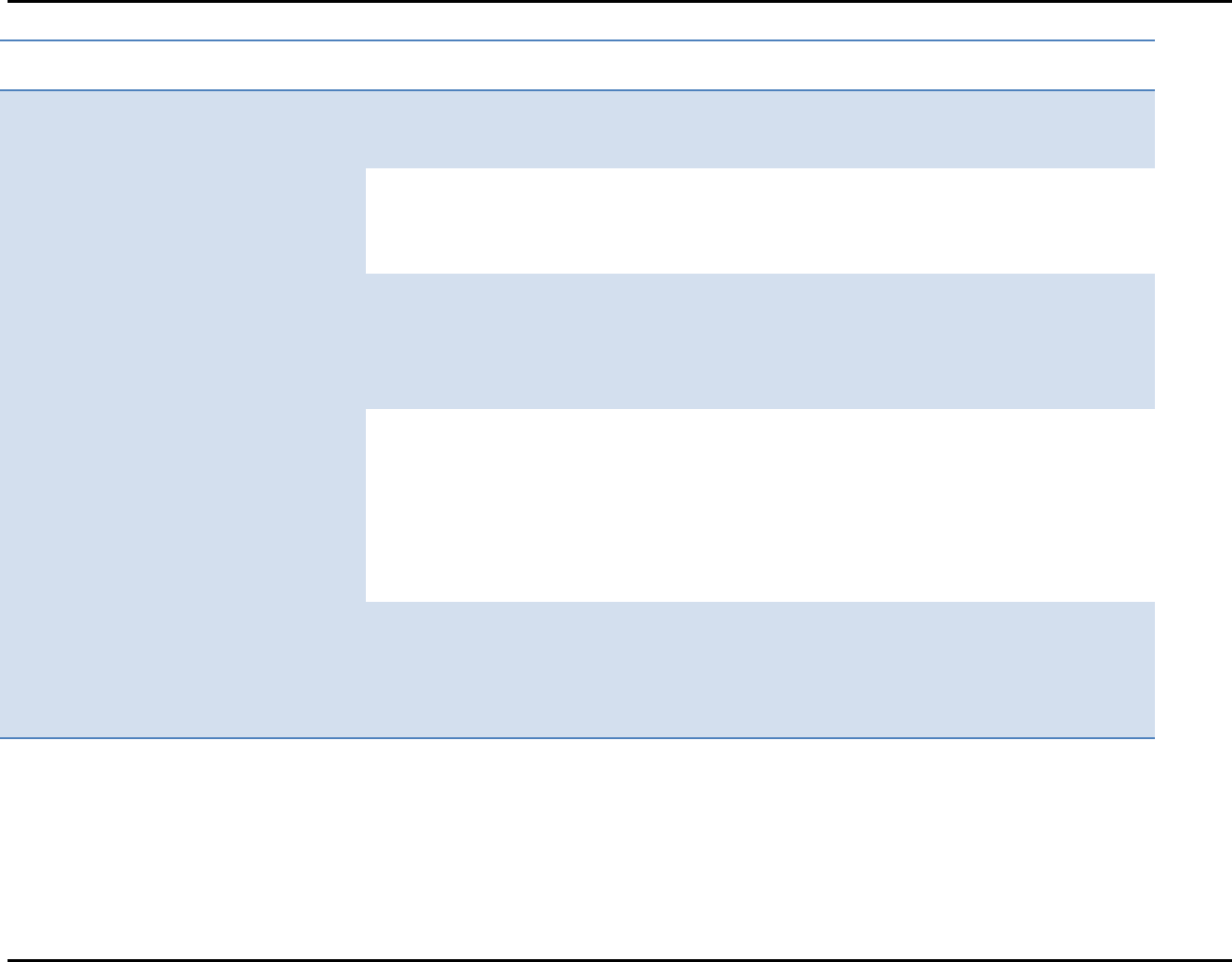
_______________________________
Federal RIM Program
Maturity Model
User’s Guide
____________________________________________________
Joint Working Group of the
Federal
Records Council
and
National Archives and Records Administration
2014

Foreword
The OMB/NARA Managing Government Records Directive (M-12-18) required the National
Archives and Records Administration (NARA) to identify a government-wide analytical tool to
evaluate the effectiveness of records management programs. NARA analyzed a variety of
models from the private sector, foreign governments, and federal agencies, including NARA’s
analytical tool, the Records Management Self-Assessment (RMSA). There are several very good
Records and Information Management (RIM) maturity models available with differing degrees
of complexity. NARA determined that there was a need for a model that was simple to
understand and implement plus, while based on federal statutes and regulations for RIM, was not
as compliance-only focused as the RMSA.
NARA chose the Records Management Maturity Model Integrated (RM3i), created by the
Department of Homeland Security (DHS) as a starting point because of its simplicity and use of
easily recognizable and widely used government-wide terminology.
A working group consisting of NARA and Federal Records Council members from the
Securities and Exchange Commission, and the Departments of Homeland Security;
Transportation; Justice; and the Interior, collaborated to create a maturity model that could be
used by all federal agencies to assess their RIM programs. The resulting Federal RIM Program
Maturity Model is loosely based on the RM3i. The working group chose to modify that tool to
expand its appeal to all federal agencies.
This Federal RIM Program Maturity Model was created as a tool to measure the maturity of an
agency RIM program. It can be used to measure the maturity of agency programs of any size and
at any level.

TableofContents
Purpose .......................................................................................................................................................... 1
What is a Maturity Model ............................................................................................................................. 1
The Keys to Successful Use .......................................................................................................................... 1
Using this Model ........................................................................................................................................... 2
Structure ........................................................................................................................................................ 2
The Tool ........................................................................................................................................................ 3
Conducting the Assessment .......................................................................................................................... 5
Glossary .........................................................................................................................................Glossary-1
References and Resources ................................................................................ References and Resources - 1
Appendix I: ................................................................................................................................................... 1
Federal RIM Program Maturity Model Breakdown.................................................................. Appendix 1-1
Domain 1: Management Support and Organizational Structure ........................................ Appendix I-1
Domain 2: Policy, Standards, and Governance ................................................................. Appendix 1-5
Domain 3: RIM Program Operations .............................................................................. Appendix 1-10

Federal RIM Program Maturity Mode
User Guide
l
Purpose
The purpose of this tool is to help agencies and/or components assess areas of their RIM program
to determine where improvements are needed most. There are a wide variety of very good
maturity models to choose from. This guide details how to conduct an assessment using this
model.
What is a Maturity Model
Maturity models are a type of analytical tool that provide a framework to assess a program or
activity based on a set of core principles and standards. An assessment using a maturity model, if
done properly and without bias, highlights strengths and weaknesses that support users in making
data driven decisions about priorities, improvement projects, and resource allocation.
This RIM maturity model will support agency efforts to:
Identify issues that undermine effective agency RIM programs
Identify RIM program strengths
Assess the capability of a RIM program to capture and provide access to information
(records) for business, legal and other purposes
Identify priority areas to address
Enable an agency to develop plans to address identified deficiencies
The Keys to Successful Use
There are several elements necessary for success in using this maturity model.
1. Honesty. Be as unbiased as possible. Do not over or under rate where your agency or
component falls on the maturity model scale. Doing either will cause you to ignore areas
that need improvement or apply resources where they may not be required.
2. Teamwork. It takes cooperation to be successful. You may need to obtain information
from other mission and program staff to gain a complete understanding of your agency’s
RIM program.
3. Completeness. Be thorough and be sure that necessary stakeholders provide input.
4. Commitment. This takes time, effort, and resources. An agency must commit to not only
identifying issues but finding solutions and executing change.

User’s Guide Federal RIM Program Maturity Model
5. Consistent. Even the most mature RIM program needs monitoring. Changes in
legislation, policies, re-organizations, and new missions happen all the time and have an
impact on the agency records and information. Using this maturity model on a consistent
basis will help you to keep track of the health of your RIM program.
Using this Model
An agency may use the model to assess:
an entire Department/Agency
component, office, or division
Whatever the choice, it is most important to recognize that this model is a tool that can be
flexible and adapted for purposes of reliable assessment of the agency program, or programs.
Note: if some of the language does not align perfectly with agency culture or structure it can be
altered accordingly, as long as the organizing domains and assessment criteria concepts remain
aligned.
Structure
This model consists of three organizing domains:
Management Support and Organizational Structure;
Policy, Standards, and Governance; and
RIM Program Operations
Each domain contains a set of assessment criteria to measure the maturity of the RIM program
for that particular domain. A RIM program can be stronger in one domain over another.
Each assessment criteria has a descriptive statement corresponding to a maturity level. The user
should choose the level that best describes the current state of the particular assessment criteria
in their agency/component RIM program.
Levels
Level 0: ABSENT - little or no RIM program activity
Level 1: DEVELOPING - some RIM program activity with most areas still under
development
Level 2: FUNCTIONING - consistent RIM program activity with some areas still under
development; stable environment
Level 3: ENGAGED - fully established, engaged, active environment
Level 4: EMBEDDED - completely established RIM program that is strategically aligned
and embedded throughout the agency/component
Page2

User’s Guide Federal RIM Program Maturity Model
Details on each domain and related assessment criteria are found in Appendix I and are
incorporated into the Excel spreadsheets used to record your rating.
When deciding which level is the best fit for the individual assessment criteria, everything is
based on whole numbers. The levels build on one another. In order to fully move on to the next
level the user must have met all of the criteria for the chosen level, as well as, the previous
levels. The summary for each domain and composite maturity scores is an average and will
contain decimal points. This is where the results will show progress between levels.
The Tool
The tool is an Excel Workbook containing 4 interconnected worksheets represented by tabs at
the bottom of the screen.
Domain 1: Management Support and Organizational Structure
Management support and a strong positioning of the RIM program in the organizational
structure is a key element to a successful RIM program. This domain measures the level
of management support, the alignment of the RIM program to business/mission
functions; strategic goals and objectives; visibility within the agency; resources including
funding; and the awareness of RIM principles.
Domain 2: Policy, Standards, and Governance
The existence of a governance framework with policies, standards; monitoring and risk
management is essential to a strong RIM program. This domain measures the level or
degree to which the program has these elements.
Page3

User’s Guide Federal RIM Program Maturity Model
Domain 3: RIM Program Operations
There are a variety of processes that cover the entire records and information lifecycle
that all RIM programs must have in order to be functional. This domain measures the
level of standardization, formality, and integration that exists within the main processes:
lifecycle management; retrieval and accessibility; integration; security and protection;
and training.
Maturity Model Summary
DO NOT try to enter anything in this spreadsheet. The changes made under the other
tabs automatically update this page. This page provides a quick summary of each domain,
the level the user has chosen for each related statement, and a total score for that domain.
At the bottom it provides the composite maturity score. This composite number
determines the overall maturity of the user’s program.
How to use the tool
For each worksheet, the user reviews the domain description and assessment criteria statements
and determines which level description best fits their current situation for that one statement.
The default level is Level 0 – Absent within each worksheet.
After each statement there is an assessment row with a drop down box. If the user determines
that their program is not at the default level of 0, click on the drop down arrow to the left of the
words “Level 0-Absent”(Column B) and choose the appropriate level from the drop down list.
The level choice automatically updates the “Score” column with the level number and changes
the color of that cell.
Page4

User’s Guide Federal RIM Program Maturity Model
Drop-down box choices and score cell colors
Level 0: Absent - Red
Level 1: Developing - Orange
Level 2: Functioning - Yellow
Level 3: Engaged - Green
Level 4: EMBEDDED – Dark Green
Reminder: As the user moves through and updates the levels within each criteria, Tab1: Maturity
Summary will automatically update the level and score fields, calculate a domain maturity score
and calculate a composite maturity score – or maturity level. You will not be able to make
changes to Tab1.
There is a line above the drop down box for the user to type in any notes or explanations so they
can keep track of why a certain level was chosen.
Conducting the Assessment
There are several steps that must be completed to successfully conduct the assessment. The
amount of time from beginning to end will depend on the size of the agency and the scope of the
assessment.
Suggested steps
1. Decide the scope of the assessment
Entire Department/Agency
Component, office, or division
2. Assign roles and responsibilities for the assessment
Project Lead – person responsible for managing, organizing, final interpretation
of results and reporting final results to management
Assessor(s) – responsible for overall data collection and helping others
Analyzer (s) – responsible for reviewing maturity model choices, interpreting
results
Key personnel and stakeholders– responsible for data collection in a specific
area and works with the assessor to determine level response choices for that area
3. Identify and contact key personnel and stakeholders
Identify and contact key personnel who can rate a given domain and assessment
criteria.
Page5

User’s Guide Federal RIM Program Maturity Model
Page6
It is essential that you include people with RIM responsibilities, even if as a
collateral duty, as well as mission and program staff where relevant.
Initial contact can be made by email or phone call depending on your agency’s
normal communication.
Describe clearly the assessment tool and its purpose.
Be careful to reassure staff that this has nothing to do with their personal job
performance or the importance of their program or mission.
4. Schedule meetings
Schedule an introductory meeting to preview the tool and its purpose.
It is essential during this meeting to describe the purpose of the assessment, the
plans for using the information after it is gathered, and the expectations for
participant effort and time commitment.
Explaining that the tool is an easy to use Excel spreadsheet. However, keep in
mind there are built in formulas.
5. Run the assessment
Provide access to the tool (and this user’s guide) to the participants so that they
can conduct a preliminary assessment on their own.
Establish a time frame for completion and submission to the assessor.
After all submissions are received, the assessor should review the submissions
and prepare for an in-person assessment interview.
o Preparation should include background research on the part of the agency
being assessed.
o Know the mission and related records.
Conduct an in-person interview with participant
The assessment in-person provides the greatest level of participation and ensures
accuracy as the assessor(s) can ask follow-up questions and address any issues
participants may have.
Review the tool with the participants, going through each assessment area and the
requirements for each maturity level.
Discuss the preliminary responses; determine if any adjustments are needed, and
if so make adjustments.
Once interviewees provide their final answers, the tool assigns the level or ‘score’
for that assessment area.
Continue the process until all assessment areas are complete.
6. Review the Score
Once the spreadsheets are complete the tool calculates the overall composite
score.

User’s Guide Federal RIM Program Maturity Model
Page7
The overall score is an average of each of the three domain scores, ranging from 0
to 4.
Review the score with participants and stakeholders. Keep in mind that some may
under or over rate their responses. It is important to discuss the results and come
to a consensus that the score accurately reflects the program’s maturity.
7. Analyze the results
What does the maturity score mean?
When conducting the assessment for the first time, the score will help determine
where the RIM program is in terms of meeting its obligations and responsibilities
to ensure records and information is accessible, retrievable and being created,
maintained, and preserved in accordance with federal laws and statues.
For subsequent assessments the score will determine if improvement efforts
achieved the desired result, as well as, the next areas to focus resources on
improving.
Carefully review maturity levels of each domain
Identify areas that need the most attention. Areas with the lowest level score
require the greater level of attention for improvements.
Identify areas that need minimal monitoring. Even areas with the highest score
require monitoring to be sure this level is maintained.
For more complex or agency-wide assessments compare the results. When
assessing multiple offices or components the score can be used for comparison.
This comparison will help identify components or offices needing the most
improvement and those that could assist others in making improvements.
Work with participants to make recommendations for improvements, and develop
action plans.
8. Next Steps
Brief management on the results
o Highlight successes and develop initiatives to address the problem areas.
o The maturity scores show what areas are on track and what areas need
work. This information can be leveraged when discussing program needs
with senior management and can illustrate where additional funds or
resources are needed to increase program maturity.
o Additionally, averaging the maturity scores of all RIM programs across a
department or agency provides a composite score that can help

User’s Guide Federal RIM Program Maturity Model
Page8
communicate program status to senior management and steer future RIM
initiatives or resource decisions.
Follow through with recommendations and action plans for improvements.
Plan the next assessment. Continuous use of the tool will allow the RIM program
to measure progress towards full maturity over time. Ideally, an assessment
should be completed annually.

GLOSSARY
Term Definition
Accessibility
The degree to which records are available for use.
Adequate and Proper
Documentation
A record of the conduct of Government business that is complete
and accurate to the extent required to document the organization,
functions, policies, decisions, procedures, and essential
transactions of the agency and that is designed to furnish the
information necessary to protect the legal and financial rights of
the Government and of persons directly affected by the agency's
activities. (36 CFR 1220.18)
Administrative Records
Documents that are preserved because they facilitate the
operations and management of an agency, but do not relate directly
to programs that help the agency achieve its mission.
These include such documents as the agency budget, personnel,
supplies, travel, and training. They are found in every agency, and
often (but not always) their dispositions are covered by the
General Records Schedules (GRS).
Agency
Any executive agency or any establishment in the Legislative or
Judicial branches of the Government (except the Supreme Court,
Senate, the House of Representatives, and the Architect of the
Capitol and any activities under his direction). (44 U.S.C.
2901(14)).
Note: for the purposes of this maturity model this term includes
Departments, Components and Independent agencies
Alienated Records
Records in the possession of an individual or organization not
legally entitled to them.
Audit
For the purposes of this maturity model an audit is official
inspection of the implementation of records management policies
and procedures.
Awareness
Knowledge or perception of records management policies,
procedures, roles and responsibilities.
Classification
Systematic identification and arrangement of business
activities and/or records into categories according to logic
structured conventions, methods, and procedural rules rep
ally
resented

Glossary
Term Definition
in a classification system. A coding of content items as members
of a group for the purposes of cataloging them or associating them
with a taxonomy.
Classified Information
A body of information with restricted access for reasons of
national security.
Communication
Imparting or exchanging of information or news. For the purposes
of this maturity model this means the methods for distributing
records management policies, procedures, regulatory changes and
other information required for individuals to carry out their records
management roles and responsibilities.
Compliance
Adherence to statutes, regulations as well as agency policies and
procedures.
Compliance Monitoring
Being regularly apprised and updated on pertinent regulations and
laws and examining processes in the organization to ensure
compliance with them. In a records management sense, this
involves reviewing and inspecting the various facets of a records
management program to ensure it is in compliance. Compliance
monitoring can be carried out by an internal audit, external
organization, or records management and must be done on a
regular basis.
Comprehensive Schedule
An agency manual or directive containing descriptions of and
disposition instructions for documentary materials in all physical
forms, record and nonrecord, created by a Federal agency or major
component of an Executive department. Unless taken from
General Records Schedules (GRS) issued by NARA, the
disposition instructions for records must be approved by NARA on
one or more Standard Form(s) 115, Request for Records
Disposition Authority, prior to issuance by the agency. The
disposition instructions for nonrecord materials are established by
the agency and do not require NARA approval. See also records
schedule. (36 CFR 1220.18)
Component
A part of a larger entity. For the purposes of this maturity model a
component can be an agency that is part of a larger Department, a
division within an agency, or an office depending on the level of
the assessment.
COOP
Acronym for Continuity of Operations. Continuity of Operations,
as defined in the National Security Presidential Directive-
PageGlossary‐2

Glossary
Term Definition
51/Homeland Security Presidential Directive-20 (NSPD-
51/HSPD-20) and the National Continuity Policy Implementation
Plan (NCPIP), is an effort within individual executive departments
and agencies to ensure that Primary Mission Essential Functions
(PMEFs) continue to be performed during a wide range of
emergencies, including localized acts of nature, accidents and
technological or attack-related emergencies.
Custody
Care and control of records, including both physical possession
(physical custody) and legal responsibility (legal custody), unless
one or the other is specified.
Creator
The originator of a document or information.
Disposal
The action taken regarding temporary records after their retention
periods expire, and consisting usually of destruction/deletion. On
rare occasions, with permission, records may be donated (36 CFR
1228.60).
Discovery
Legal term for producing information as evidence in a legal
proceeding.
Disclosure
Providing information to individuals or group authorized to
receive the information.
Disposition
Those actions taken regarding records no longer needed for the
conduct of the regular current business of the agency. (36 CFR
1220.18)
Disposition Authority
The legal authorization for the retention and disposal of records. .
Request for Records Disposition Authority, which have been
approved by the Archivist of the United States. For nonrecord
materials, the disposition is established by the creating or custodial
agency. See also records schedule. (36 CFR 1220.18)
Electronic Information
System
An information system that contains and provides access to
computerized Federal records and other information. (36 CFR
1236.2 (b)
Evaluation
The selective or comprehensive inspection, audit, or review of one
or more Federal agency records management programs for
effectiveness and for compliance with applicable laws and
regulations. It includes recommendations for correcting or
improving records management policies and procedures, and
PageGlossary‐3

Glossary
Term Definition
follow-up activities, including reporting on and implementing the
recommendations. (36 CFR 1220.18)
Information Security
The practice of defending information from unauthorized access,
use, disclosure, modification, perusal, inspection, recording or
destruction.
Information System
The organized collection, processing, transmission, and
dissemination of information in accordance with defined
procedures, whether automated or manual. (36 CFR 1220.18)
Internal Controls
A process designed to provide reasonable assurance regarding the
achievement of objectives in the following categories:
effectiveness and efficiency of operations; reliability of reporting;
compliance with applicable laws and regulations. In other words,
internal control is a process consisting of ongoing tasks and
activities. The process is performed by people (not merely policy
manuals, systems, and forms). It provides reasonable assurance to
an organization’s management, and is geared to the achievement
of objectives in one or more separate but overlapping categories.
Finally, the process is adaptable to an entities structure. (Internal
Control – Integrated Framework, September 2011.)
Lifecycle
Management concept that records pass through stages: from
creation/capture, maintenance and use, and disposition.
Metadata
Consists of preserved contextual information describing the
history, tracking, and/or management of an electronic document.
(36 CFR 1236.2 (b).
Monitoring
Ensuring that policies and procedures are being implemented
routinely, efficiently, and appropriately.
NARA
National Archives and Records Administration
Owner
The entity responsible for maintaining records or information
Permanent Record
Record appraised by NARA as having sufficient historical or other
value to warrant continued preservation by the Federal
Government beyond the time it is needed for administrative, legal,
or fiscal purposes
Policy
Defined course of action
Privacy
Protecting personally identifiable information
PageGlossary‐4

Glossary
Term Definition
Professional Development
Acquisition of skills and knowledge for career advancement. For
the purposes of this maturity model this refers to enhancing
records and information management knowledge and skills.
Program Records
Those records created by each Federal agency in performing the
unique functions that stem from the distinctive mission of the
agency. The agency’s mission is defined in enabling legislation
and further delineated in formal regulations.
Record (Federal Record)
Includes all books, papers, maps, photographs, machine-readable
materials, or other documentary materials, regardless of physical
form or characteristics, made or received by an agency of the
United States Government under Federal law or in connection with
the transaction of public business and preserved or appropriate for
preservation by that agency or its legitimate successor as evidence
of the organization, functions, policies, decisions, procedures,
operations, or other activities of the Government or because of the
informational value of data in them. (44 United States Code
[U.S.C.] 3301, Definition of records, disposal of records)
Recordkeeping
Requirements
All statements in statutes, regulations, and agency directives or
other authoritative issuances, that provide general or specific
requirements for Federal agency personnel on particular records to
be created and maintained by the agency. (36 CFR 1220.18).
Records Maintenance
Any action involving the storage, retrieval, and handling of records
kept in offices by, or for, a Federal agency.
Records Management
The planning, controlling, directing, organizing, training,
promoting, and other managerial activities related to the creation,
maintenance and use, and disposition of records, carried out in
such a way as to achieve adequate and proper documentation of
Federal policies and transactions and effective and economical
management of agency operations. (36 CFR 1220.18)
Records Schedule
(1) Request for Records Disposition Authority that has been
approved by NARA to authorize the disposition of Federal
records;
(2) A General Records Schedule (GRS) issued by NARA; or
(3) A published agency manual or directive containing the records
descriptions and disposition instructions approved by NARA on
PageGlossary‐5

Glossary
Term Definition
one or more SF 115s or issued by NARA in the GRS (36 CFR
1220.18)
Resources
Sources of funding, materials, energy, services, staff, knowledge,
or other assets needed to perform a particular function or activity.
Restricted Information
Information with limited access.
Retention
The length of time a record must be kept. (36 CFR 1220.18)
Retrieval
The process of getting information back. For the purposes of this
maturity model this means the ability to access information
whether it is stored on-site, off-site, on-line, off-line whenever it is
needed.
Risk
The potential harm that may arise from some present process or
from some future event.
Risk Management
The process of identifying (risk assessment) and evaluating (risk
analysis) risk and then developing strategies to manage the risk.
Scheduled
Records whose final disposition has been approved by NARA.
Stakeholder
An individual, group or organization who may affect, be affected
by, or perceive itself to be affected by a decision, activity or
outcome of the project. (PMBOK 5
th
ed.)
Strategic
Identification of long-term or overall aims and interests and the
means of achieving them.
System
For the purposes of this maturity model the word system refers to
an electronic information system.
Taxonomy
Use of standard names and/or wording.
Temporary Record
Any Federal record that has been determined by the Archivist of
the United States to have insufficient value (on the basis of current
standards) to warrant its preservation by the National Archives and
Records Administration.
Training
For the purpose of this maturity model: training is the
communication of standardized information that improves the
records management knowledge, skills, and/or awareness of
agency employees. Training can be either in a classroom setting or
distance-based (e.g., web-based training), but it must:
PageGlossary‐6

Glossary
Term Definition
be regular (occurring more than just once),
be repeatable and formal (all instructors must provide the
same message, not in an ad hoc way), and;
communicate the agency’s vision of records management.
Unauthorized Disposal
The improper removal of records without NARA approval or the
willful or accidental destruction of records without regard to a
NARA approved records schedule. Unauthorized disposition of
Federal records is against the law and punishable by up to
$250,000 in fines and imprisonment. (44 U.S.C. 3106 and 18
U.S.C. 2071)
Unscheduled Records
Records whose final disposition has not been approved by NARA.
Unscheduled records may not be destroyed or deleted.
Vital Records
Essential agency records that are needed to meet operational
responsibilities under national security emergencies or other
emergency or disaster conditions (“emergency operating records”),
or to protect the legal and financial rights of the Government and
those affected by Government activities (“legal and financial rights
records”).
PageGlossary‐7

References and Resources
There are a number of records and information references and resources used in the creation of
this maturity model which the user may find helpful in building their program.
Statutes from the United States Code (U.S.C)
44 U.S.C. Chapters 21, 29, 31, and 33
It is the purpose of these chapters to require the establishment of standards and procedures to
assure efficient and effective records management. Such records management standards and
procedures shall seek to implement the following goals:
(1) Accurate and complete documentation of the policies and transactions of the Federal
Government.
(2) Control of the quantity and quality of records produced by the Federal Government.
(3) Establishment and maintenance of mechanisms of control with respect to records
creation in order to prevent the creation of unnecessary records and with respect to the
effective and economical operations of an agency.
(4) Simplification of the activities, systems, and processes of records creation and of
records maintenance and use.
(5) Judicious preservation and disposal of records.
(6) Direction of continuing attention on records from their initial creation to their final
disposition, with particular emphasis on the prevention of unnecessary Federal
paperwork.
(7) Establishment and maintenance of such other systems or techniques as the
Administrator or the Archivist considers necessary to carry out the purposes of this
chapter, and chapters 21, 31, and 33 of this title.
Regulations from the United States Code of Federal Regulations (CFR)
36 CFR, Chapter XII, Subchapter B
Subchapter B specifies policies for Federal agencies’ records management programs relating to
proper records creation and maintenance, adequate documentation, and records disposition. The
regulations in this subchapter implement the provisions of 44 U.S. C Chapters 21, 29, 31 and 33.
National Archives and Records Administration (NARA)
(The resources listed below are available at www.archives.gov. The user should check this site
frequently for new guidance, policy and other updates)

References and Resources
Memorandums to Agency Records Officers
NARA Memorandums (Memos) to Agency Records Officers are general announcements issued
via email by the Office of the Chief Records Officer for the United States Government. The
content of the Memos vary, but typically include information about Federal records management
policies, guidance, training opportunities, and meetings.
NARA Bulletins
NARA issues NARA Bulletins to Federal agencies to provide guidance and assistance on the
management and disposition of Federal records. The user should continually check the website
for new guidance and policy updates.
Of particular interest
NARA Bulletin 2014-06: Guidance on Managing Email
NARA Bulletin 2014-04: Revised Format Guidance for the Transfer of Permanent
Records
NARA Bulletin 2013-03 Guidance for Agency Employees on the Management of
Federal Records, Including Email Accounts, and the Protection of Federal Records from
Unauthorized
NARA Bulletin 2013-02: Guidance on a New Approach to Managing Email Records
Records Management Self-Assessment (RMSA)
Each year, NARA requires all Federal agencies to conduct and submit to NARA an annual
records management self-assessment (RMSA). The goal of the self-assessments is to determine
whether Federal agencies are compliant with statutory and regulatory records management
requirements. An annual report is published on NARA’s website
Records Management Publications
Disposition of Federal Records
Explains how to develop, implement, and evaluate records disposition programs in
Federal agencies. Includes links to the texts of Federal laws and regulations affecting
records disposition. (2000 web edition based on the 1997 edition)
Documenting Your Public Service
Provides basic information to enable you to distinguish Federal records from other
documentary materials, including personal files.
Records Management Self-Evaluation Guide
Provides a high-level framework for evaluating a Federal agency records management
program. (2014).
ReferencesandResources‐2

References and Resources
RM EXPRESS Blog
The NARA maintains several blogs in the interest of sharing more information with the public
and our activities. Of particular interest to the users of this maturity model is blog of the Office
of the Chief Records Office for the Federal Government. This is another place to check
frequently for updates on federal records management; ask questions, and provide your own
feedback.
The Department of Justice
The Department of Justice website www.justice.gov provides a wide range of resources on open
government; the Freedom of Information Act; and the Privacy Act. This resource changes
periodically.
Federal Records Council (FRC)
The FRC is made up of Federal agency records officers who provide advice and feedback to the
NARA. The mission of the Council is to identify priority issues and provide recommendations to
the Archivist of the United States on best practices in records and information (RIM) in the
Federal Government.
Federal Records Officer Network (FRON)
The FRON is a network of Records Officers that address RM programmatic issues that exists
across Federal agencies. Its purpose is to share experiences; leverage best practices, tools,
templates; and leverage the collective efforts to address common issues.
International Standards Organization
ISO 15489-1-2001: Records Management Part I: General
ISO 15489-2-2001: Records Management Part 2: Guidelines
ISO 16175: Principles and functional requirements for records in electronic office
environments. Parts I – 3
RIM Professional Organizations
ARMA International
Society of American Archivists
AIIM (Association for Information and Image Management)
International Council on Archives
ReferencesandResources‐3

AppendixI:
FederalRIMProgramMaturityModelBreakdown
Domain1:ManagementSupportandOrganizationalStructure
Agency/component management creates a positive foundation that enables and empowers the agency’s/component’s RIM program.
AssessmentArea Level Definition
1‐1:StrategicPlanning 0 (a)NoalignmentofRIMneedstobusiness/mission
(b)Littleornoconnectiontostrategicoroperationalplanning/execution
(c)NorecognitionorpromotionofRIMneedsandissuesbyleadership
(a)Managementandleadership
incorporateRIMasastrategicelement 1 (a)SomeRIMalignmentwithlocalizedbusiness/missionactivities
oftheagency’s/component’sbusiness (b)Limitedstrategicelementsestablished
andmission.
(c)LeadershipdevelopingunderstandingofRIMneedsandissues,butRIMis
(b)RIMprogramhasstrategicgoalsand notidentifiedasahighpriority
objectives.
2 (a)MoreconsistentapproachdevelopedtoalignRIMneedswith
(c)ManagementplacesRIMwithinthe business/missionactivities
partoftheagency/comp one ntthat (b)Somestrategicelementsestablished
providesRIMvisibility,authority,and
(c)Leadershipunderstand sandsupportstheneedtoaddressRIMasan
sufficientresources.
agency/component
3 (a)RIMprogramaddressedthroughaproactiveapproachtoalignwith
_____________________________________________________________________________________

Appendix I
4
business/missionactivities
(b)Strategicelementsestablishedtosupportintegrationwithstrategicand
operationalplanning/execution
(c)LeadershipfullyendorsestheRIMprogramandparticipatesinthe
governancefunction
(a)RIMisembeddedasacorefunctionthatisaddressedatthestrategiclevel
(b)FullydevelopedgovernanceframeworkdefinesRIMpolicy, roles,and
responsibilitiesatbothastrategicandoperationallevel
(c)RIMisfullyintegratedwiththeagency’s/component’sstrategicelements
(d)LeadershipengagestheRIMprogramatthestrategiclevel
AssessmentArea Level Definition
1‐2:LeadershipandManagement
(a)Leadershipandmanag ementatall
levelsendorsetheRIMprogram.
(b)Leadershipandmanag ement
considerrecordsandinformation
valuableassets.
(c)Agency/componentassignsauthority
anddelegatesresponsibilityto
0
1
2
3
4
NorecognitionorpromotionofRIMneedsandissuesbyleadership
LeadershipdevelopingunderstandingofRIMneedsandissues,butRIMisnot
identifiedasahighpriority
LeadershipunderstandsandsupportstheneedtoaddressRIMasan
agency/component
LeadershipfullyendorsestheRIMprogramandparticipatesinthegovernance
function
(a)LeadershipengagestheRIMprogramatthestrategiclevel
(b)Agency/componentRIMstrategyisaninputforbusiness/missionprocess
PageAppendixI‐2

Appendix I
personnelwithskillsets
assignedRIMactivities.
thatalignwith development
AssessmentArea Level Definition
1‐3:Resources
Agency/componentprovides:
(a)Appropriatelyqualifiedandtrained
RIMstaff;
(b)Sufficientnumbersofdedicatedstaff
tomeetagencyneedsforprogram
implementation.
(c)Fundingforcontinuingeducationfor
RIMstaff;and
(d)Sufficientfundingforservices,
equipment,technologyandacquired
resources.
0
1
2
(a)Noelectronicrecordsmanagementexists
(b)RIMprocessesareallhandledmanually
(c)Little/nousability(busi ness benefit)ofrecords
(d)RIMprogramorganizationandsufficientdedicatedstaffdonotexist
InformalRIMorganizationwith:
(a)Indeterminaterolesandresponsibilities,withstaffingas“otherdutiesas
assigned’
(b)Limitedfunding
(c)Scattered,localizedelectronicrecordsmanagementwithoutstandardization
(d)MostlymanualRIMprocesses
(e)Usabilityofrecordsprimarilylimite dtoimmediateowners/creators
FormalRIMorganizationwith:
(a)Definedrolesandresponsibilitieswithdedicatedstaff
(b)Fundingidentifiedandapplied
(c)Thebeginningsofanagency/component‐wideRIMstrategythatincludes
electronicrecordsmanagementtools
(d)Increaseduseofelectronicrecordsmanagementtoolsthatarebeginningto
reducemanualRIMprocesses
(e)Increasedusabilityofrecordsthroughsomeautomation
PageAppendixI‐3

Appendix I
PageAppendixI‐4
3 FullydefinedandresourcedRIMorganizationwith:
(a)Welldefinedrolesandresponsibilitieswithadequatededicatedstaff
(b)Fundingthatisdefinedatthestrategiclevel
(c)Toolsandapplicationsthatarealignedwithagency/componentstandards
forelectronicrecordsmanagement
(d)Initialphasesofstreamliningandcoordinationofelectronicrecords
managementfurtherreducingman ualRIMprocessesandincreasingefficiency
andeffectivenessoftheRIMprogram
(e)Highlevelsofusabilityofrecordsthroughautoma tion
(f)There‐useofrecordsbeingpromotedthroughlimitedagency/component
services,equipment,technologyandacquiredresources
4 RIMorganizationis:
(a)Integratedthroughouttheagency/component
(b)ProactiveindrivingbusinessareaRIMprocesses
(c)AddressingRIMstrategyattheagency/componentstrategiclevel
(d)IncludingRIMsystems intheagency/componentITstrategicplan
(e)Streamliningandcoordinatingelectronicrecordsmanagementtoolsand
applicationsacrosstheagency/componentyieldingadditionalgainsin
efficiency,effectiveness,andre‐use
(f)Fullycapableofleveragingrecordsrepositoriestoproperlymaintainall
records

Appendix I
AssessmentArea Level Definition
1‐4:Awareness
Theextenttowhichthe
agency/component:
(a)Hasanestablishedmethodto
informallpersonneloftheirrecords
managementresponsibilitiesinlawand
policy;
(b)Hasdevelopedacommunications
programthatpromotesawareness;and
(c)Continuouslyprovidesup‐to‐date
RIMpolicyandguidancetoall
personnel.
0
1
2
3
4
NoawarenessoradoptionofRIMprinciples
AdoptionofRIMprinciples perlocalizedneeds/desires
(a)MorewidespreadadoptionofstandardizedRIMprinciples
(b)StaffaremoreawareoftheirRIMresponsibilities
(c)Developingmanagementsupportstructure
(a)RIMprinciplesareappliedconsistentlybytheagency/component
(b)AllstaffareawareofindividualRIMresponsibilities
(c)ManagementsupportstructureisinplacetopromoteadoptionofRIM
principles
(a)RIMprinciplesareembeddedwithagency/componentbusiness/mission
activities
(b)ContinuousimprovementofRIMfunctionsusingmanagementsupport
structureandongoingclearcommunicationmethodstoelevateRIM
performance
Domain2:Policy,Standards,andGovernance
The RIM program has a governance framework, articulated policy, and clear standards.
AssessmentArea Level Definition
2‐1:Policy,Standards,
Framework
andGovernance 0
1
NoRIMpolicy,standards,orgovernance
(a)AdhocRIMpolicy
(b)FewornoformalRIMstandards
existacrosstheagency/component
PageAppendixI‐5

Appendix I
(a)Agency/componentassigns
responsibilityfordevelopingRIM
policy,standards,andgovernance.
(b)RIMpolicy,standards,and
governancearedocumentedinan
understandablemanner.
(c)RIMpolicy,standards,and
governancearebaseduponlegislative
andstatutoryregulatoryrequirements
andprofessionalstandards.
2
3
4
(c)Governanceframeworkisformingtosupportstrategicandoperational
execution
(d)Informalanddisparategovernancepractices
(a)Relevantexternalandinternalrequirementsarestartingtobeincorporated
intoagovernanceframeworkthatestablishesRIMprinciples
(b)Limitedadoptionofagency/component‐wideRIMpolicy,standards,or
governance
(a)FormalRIMpolicy,standards,andgovernancees tablishedforthe
agency/component
(b)RIMelementsarewidelyadoptedacrosstheagency/component
(c)Governanceframeworkisestablishedtosupportintegrationwith strategic
andoperationalplanning/execution
(d)FormalRIMpolicy,standards,andgovernancearesystematically
promulgatedthroughtheuseofsystems,training,auditing,andcompliance
measurement
RIMpolicy,standards,andgovernanceframeworkare:
(a)Incorporatedintobusiness/missionactivitiesandprocessesatthestrategic
level
(b)Recognizedattheexecutive‐levelasakeysuccessfactorforthe
agency/component
(c)Continuouslyimproveduponthroughtheuseofwell‐establishedprocesses
(d)Verticallyandhorizontallyintegratedandarewellestablishedacrossthe
agency/component
PageAppendixI‐6

Appendix I
AssessmentArea Level Definition
2‐2:ComplianceMonitoring
(a)Performancemeasuresandgoalsare
establishedattheagency/component
andprogramlevels.
(b)Theagency/componenthas
mechanismsinplacetomonitorand
reviewcompliancewithRIMpolicy,
standards,andgovernance.
(c)Complianceismeasuredand
reported(internalaudits,reviewsand
evaluations).
0
1
2
3
4
Nocompliancemonitoring; reactiveandmanualprocesses
(a)SomeRIMfunctionshavebeeninformallydevelopedtoidentifyandaddress
compliance
(b)SomeRIMcomplianceauditinfrastructure
(c)Complianceprocessesaremostlymanual
(d)Limitedstandardizationofcompliancemanagem entacrossthe
agency/component
(a)RIMfunctions aredefinedtoidentifyandaddresscomplianceneeds
(b)RIMcomplianceauditiscond uctedattheagency/componentlevel
(c)Initialeffortsatstandardizedmeasurementandreporting
(d)Disparateautomationwithlimitedstandardiza tionofprocessesacrossthe
agency/component
(a)RIMfunctions fullyimplementedtoidentify,address,manage,measure,and
enforcecompliance
(b)RIMcomplianceauditiscond uctedattheagency/componentlevel
RIMfunctionsareintegratedintoagency/componentstrategyand
business/missionpracticestoincreasecompliancelevelswhilereducing
managementoverhead
PageAppendixI‐7

Appendix I
AssessmentArea Level Definition
2‐3:RiskManagement
(a)Agency/componentidentifiesand
analyzesinternalandexternalriskto
agency/componentrecordsand
information.
(b)Agency/componentdetermineswho
isbesttomanageormitigatetherisk
andwhatspecificactionsshouldbe
taken.
(c)Agency/componentmonitorsthe
implementationofactionstomanage
ormitigaterisk.
0
1
2
3
4
(a)Little/noriskanalysis;reactiveandmanualprocesses
(b)Highlevelofexposuretoriskduringlitigationand/orinteractionswith
regulatorybodies
(a)SomeRIMfunctionshavebeeninformallydevelopedtoidentify,address,
andmanagerisks
(b)Little/noRIMriskanalysisinfrastructure
(c)Riskmitiga tionprocessesaremostlymanual
(d)Limitedstandardizationofriskmanagementacrosstheagency/componen t
(e)Highlevelofexposuretoriskduringlitigationand/orinteractionswith
regulatorybodies
(a)RIMfunctions aredefinedtoidentifyandaddressriskmitigationneeds
(b)RIMriskanalysisisconductedattheagency/componentlevel
(c)Initialeffortsatstandardizedmeasurementandreporting
(d)Disparateautomationwithlimitedstandardiza tionofprocesses
(e)Moreunifiedandactiveapproachtomitigatingexposuretorisk
(a)RIMfunctions arefullyimplementedtoidentify,address,manage,measure,
andreducerisks
(b)RIMriskanalysisisconductedattheagency/componentlevel
(c)Consolidatedsystemswithhigherlevelofstandardizationofprocesses
facilitateaproactiveapproachthatfurtherreducesexposuretorisk
(a)RIMfunctions areintegratedintoagency/componentstrategyand
business/missionpracticestoincreasecompliancelevelsmaximizingresources
forincreasedefficiencies
(b)Agency/componentRIMsystemswithembeddedmanagementfunctions
PageAppendixI‐8

Appendix I
facilitateoptimalmanagementofexposuretorisk
AssessmentArea Level Definition
2‐4:Communications
Theleveltowhich:
(a)Agency/componenthasaflexible
communicationsframeworkfor
disseminatingRIMpolicies,standards,
andgovernance;and
(b)Agency/componentusesa
communicationsframeworktoensure
thatallstaffunderstandandcomply
withRIMresponsibilities.
0
1
2
3
4
AdhoccommunicationsforRIMpolicies,standards,andgovernance
(a)Minimaldevelopmentandimplem entationofcommunicationsforRIM
policies,standards,andgovernance
(b)Operationalmodeisreactive
(a)Completedevelopmentofcentralizedandintegratedcommunicationsfor
RIMpolicies,standards,andgovernance
(b)Initialstagesofproactiveimplementationacrosstheagency/component
(a)CommunicationsframeworkforRIMpolicies,standards,andgovernanceis
fullyimplementedacrosstheagency/component
(b)Processesareestablishedtoproactivelydelivercommunications
Agency/component‐widecommunica tionsforRIMpolicies,standards,and
governancestrategiesareintegratedintocorebusiness/missionpractices
AssessmentArea Level Definition
2‐5:InternalControls(Internalcontrols
aredefinedas:controlactivitiesor
processesthatprovideareasonable
0
1
Nointernalcontrolsinplace
Somelocalizedinternalcontrolsdevelopmentanduse
PageAppendixI‐9

Appendix I
assuranceoftheeffectivenessand
efficiencyofoperationsandcompliance
withRIMpoliciesandpracticessuchas
approvals,authorizations,verifications,
reconciliationsandsegregationof
dutiesthatseparatepersonnelwith
authoritytoauthorizeatransaction,
processthetransaction,andreviewthe
transaction.)
Theagency/component:
(a)Identifiesanddevelopsinternal
controls;and
(b)Usesinternalcontrolstoensure
compliancewithRIMpolicies,
standards,andgovernance.
2
3
4
Formalinitiativestodevelopandimplementinternalcontrolsacrossthe
agency/componenttoreasonablyensurecompliancewithRIMpolicies,
standards,andgovernance
(a)Internalcontrolshavebeendevelopedandarebeginningtobe
implementedacrosstheagency/component
(b)Staffhavebeennotifiedoftheirresponsibilitiesinimplementinginternal
controls
(a)Internalcontrolsareintegratedacrosstheagency/componen t;
(b)Staffareawareofinternalcontrolsproceduresandareactively
implementingcontrolactivitiesandprocesses
Domain3:RIMProgramOperations
The RIM program has effective processes that cover the entire records and information lifecycle.
AssessmentArea Level Definition
3‐1:LifecycleManagement
(a)Recordsandinformationare
0 (a)
(b)
(c)
Nocentralized/standardizedidentification
NodefinedRIMlifecycleforrecords
RIMprocessesareperformedadhoc
ofrecords
PageAppendixI‐10

Appendix I
managedthroughoutthelifecycle: (d)Noformaldefinitionorclassificationofrecords
creation/capture,classification,
maintenance,retentionanddisposition.
1 (a)Someprocessesexistfortheidentificationofrecordsbutlackformal
definitionandstandardization
(b)Recordsandinformationare
identified,classifiedusingataxonomy,
inventoried,andscheduled.
(b)Little/noRIMstrategywithlocalizedmanagementofrecords
(c)DisparateRIMlifecycleprocessesacrosstheagency/component
(d)Recordsmetadatastructureandusearehighlylocalized
2 (a)Formalprocessesexistfortheidentificationandclassificationofrecords
acrosstheagency/component
(b)Definitionofrecordtypesarebeginningtobeestablishedandstandardized
acrosstheagency/component
(c)Someunifiedmetadatastructuresha vebeendeveloped
(d)FormalRIMstrategyexistswithadefinedlifecyclemanagementschedule
(e)StandardizedRIMlifecycleprocesseshavebeendevelopedacrossthe
agency/component
(f)StandardizedRIMprocessesarebeginningtobepromulgatedacrossthe
agency/component
3 (a)Processesforidentificationandclassificationofrecordsarestandardized
acrosstheagency/component
(b)Recordsdefinitionsarebeginningtobemanagedconsistentlyacrossthe
agency/component
(c)Unifiedmetadatastructuresarebeginningtobeappliedacrossthe
agency/component
(d)RIMlifecycleprocessesarebeingappliedandpracticedconsistentlyacross
theagency/component
(e)Increasingcentralizationofrecordslifecyclemanagement
PageAppendixI‐11

Appendix I
4
(f)SomeintegrationofRIMprocesseswithbusinessautomationtools
(a)Recordsidentificationandclassificationprocessesaredocumentedand
integratedwithagency/componentbusiness/missionatthestrategiclevel
(b)Recordsdefinitionshavebeendevelopedattheagency/componentlevel
(c)Unifiedmetadatastructuresareappliedconsistentlyacrossthe
agency/component
(d)RIMlifecycleprocessesareoptimizedacrosstheagency/component
(e)RIMlifecycleprocessesarefullysupportedthroughautomationacrossthe
agency/componentwithongoingandproactivemaintenance
(f)HighlevelofRIMintegrationwithbusiness/missionactivitiesandprocesses
AssessmentArea Level Definition
3‐2:RetrievalandAccessibility
Theleveltowhichrecordsand
informationareeasilyretrievable
madeaccessiblewhenneededfor
agency/componentbusiness.
and
0
1
(a)Recordsarenotconsistentlyretrievableoraccessibleinatimelymanner
(b)Nodefinedprocessesformaintainingrecordsmakingaccessandretrieval
difficult
(c)RIMprocessesareperformedadhoc
(d)Noformaldefinitionorclassificationofrecords
(a)Mostrecordscanbeaccessedandretrievedinatimelymanner
(b)Little/noRIMstrategyforaccessandretrievalwithlocalizedmanagement
records
(c)RIMprocessesformaintainingrecordsarestartingtobestandardized
agency/component‐wide
of
PageAppendixI‐12

Appendix I
2
3
4
(a)Formalprocessesexistinorderforrecordstobeaccessedandretrievedina
timelymanner
(b)StandardizedRIMlifecycleprocesseshavebeendevelopedacrossthe
agency/componentmakingaccessandretrievalofrecordsmorereliable
(c)Standardizedprocessesforaccessandretrievalarebeginningtobe
promulgatedacrosstheagency/component
(a)Processesforidentificationandclassificationofrecordsarestandardized
acrosstheagency/componentmakingaccessandretrievalreliable
(b)Recordsareusuallyaccessedandretrievedinatimelymanner
(a)Recordsidentificationandclassificationprocessesaredocumentedand
integratedwithagency/componentbusiness/missionatthestrategiclevelin
orderforrecordstobeaccessedandretrievedinatimelymanner
(b)Recordsdefinitionshavebeendevelopedattheagency/componentlevel
makingaccessandretrievalaccurateandefficient
(c)Allrecordsareaccessedandretrievedwheneverneededinatimelymanner
PageAppendixI‐13

Appendix I
AssessmentArea Level Definition
3‐3:Integration
(a)RIMisintegratedinto
agency/component‐widebusiness
processes.
(b)Recordkeepingrequirementsare
integratedintoinformationsystems
andcontractedservices.
(c)RIMstaffparticipateinsystem
acquisition,development,and/or
enhancements.
0
1
2
3
4
NointegrationofRIMfunctionalityincorebusiness/missionactivitiesand
processes
(a)LimitedanddisparateRIMfunctionalintegrationintobusiness/mission
activitiesandprocesseswithlocalizedefforts
(b)RIMprocessesaredesignedaroundexistingsystemsandprocesses
(a)FormalizedplanningisbeginningtointroducesomestandardizedRIM
functionalitythroughintegrationandrationalizationofRIMtools
(b)BusinessstrategyandprocessdesignconsiderintegrationofsomeRIM
functions
(a)PlanisdevelopedtointegrateRIMfunctionalityintoagency/component‐
widecorebusiness/missionactivitiesandprocesses
(b)Implementationofstandardizedtoolsandtechnologytofacilitate
automationofbusiness/missionandRIMprocesses
(c)Developingintegrationintodevelopmentofbusinessstrategyandprocess
design
(a)RIMfunctionalitystandardizedandfullyintegratedintocorebusiness
processesattheagency/componentlevel
(b)RIMoperatesasanintegralcomponentofbusinessstrategydevelopment
andprocessdesign
PageAppendixI‐14

Appendix I
AssessmentArea Level Definition
3‐4:SecurityandProtection
(a)Agency/componenthaspoliciesin
placetoprotectrecordsand
informationfrominternalandexternal
threats.
(b)Agency/componenthassystematic
identificationandprotectionofrecords
andinformationessentialforan
emergencyorContinuity‐of‐Operations
(COOP)event.
(c)Agency/componentprovides
guidanceonthehandlingofrecords
andinformationexemptfrom
disclosure.
(d)Agency/componenthasaccess
controlsandsafeguardsforsecurity
classifiedinformationaswellasother
typesofrestrictedinformation.
0
1
2
3
4
Nosecuritymodelinplace
(a)Somelocalizedsecuritytools/systemsareavailable
(b)RIMsecurityisdependentonuncoordinatedtools/systems
(a)FormalinitiativesinplacetocreateasecuritymodeladdressingRIMneeds
throughouttherecordslifecycle
(b)Limitedcoordinatedma nagementandautomationexistacrossthe
agency/component
(c)RIMsecuritypoliciesaregovernedandimplementedacrossthe
agency/component
(a)Standardizedsecuritymodelwithpoliciesand proceduresinplace
(b)Coordinatedmanagementandautomationprovidesupportacrossthe
agency/componentwithsomeimplementationsupportatthe
agency/component
(c)RIMsecuritypoliciesaredefinedandbeginningtobeimplementedatthe
agency/componentlevel
(a)Agency/componentsecuritymodelprovidesintegratedRIMsupport
(b)RIMsecurityissupportedbyanagency/componentservice
(c)RIMsecuritypoliciesaregovernedandimplementedatthe
agency/componentlevel
PageAppendixI‐15

Appendix I
AssessmentArea Level Definition
3‐5:Training 0 (a)NoformalRIMtraining
(b)NosupportstructureforprofessionaldevelopmentofRIMp ersonnel
(a)Agency/componentensuresthatall 1 (a)LimitedRIMtrainingdoneonanadhocbasiswithlittle/nostandardization
staffaretrainedontheirrecords
managementresponsibilities.
(b)SomesupportforprofessionaldevelopmentofRIMpersonnel
(b)Agency/componentsupports
professionaldevelopmentforRIM
personnel.
2 (a)FormalizedandstandardizedRIMtrainingplanhasbeendeveloped
(b)AllstaffreceivesomelevelofbasicRIMtraining,andrecordsroles(e.g.
officers,liaisons,stewards)receivespecializedtraining
(c)ManagementsupportforprofessionaldevelopmentofRIMpersonnelis
(c)Agency/componentprovides beingdeveloped
specializedRIMtrainingtokey
stakeholders.
3 (a)Allstaffreceivewell‐defined,customizedtrainingbasedontheirjob
requirements
(b)Managementsupportstructureisinplacetoprovideconsistentand
ongoingtrainingandtopromoteadoptionofRIMprinciples
(c)ManagementsupportsprovisionaldevelopmentofRIMpersonnel
4 (a)Allstaffreceivewell‐defined,customizedtrainingbasedontheirjob
requirementsandunderstandtheirRIMresponsibilities
(b)ManagementsupportsongoingtrainingtoelevateRIMperformance
(c)RIMpersonnelhavesupportforandtakepartinprofessionaldevelopme nt
PageAppendixI‐16
